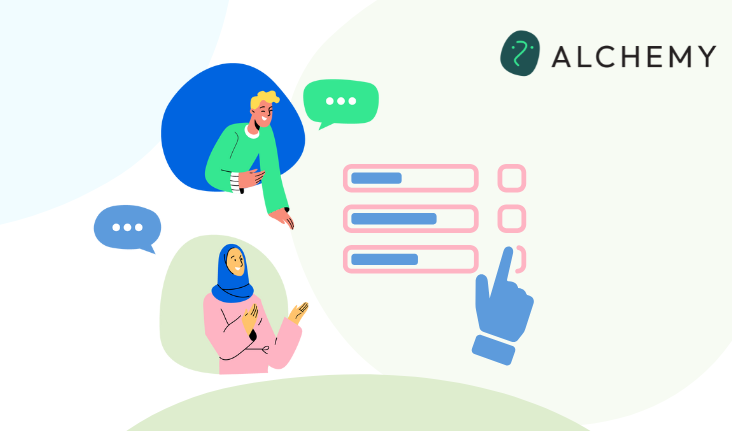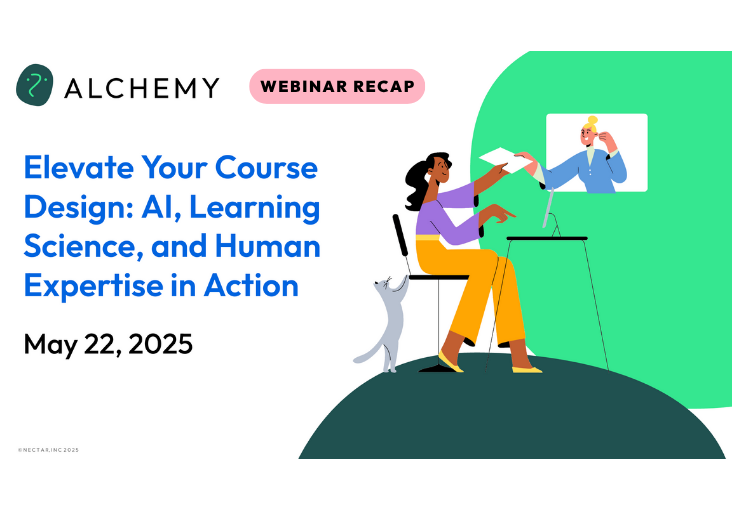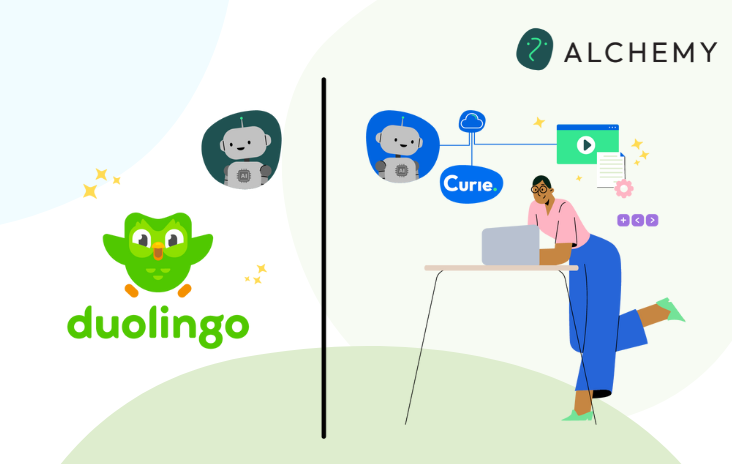Article
What We Gain, What We Guard: Educators Reflect on AI in Learning Design

As AI continues to reshape the landscape of education, one thing is clear: those closest to course design — educators and instructional designers — aren’t passive observers. They’re engaged, opinionated, and thoughtful. At our recent webinar, Elevate, Not Just Accelerate: Using AI to Support Better Course Design, we invited participants to reflect not only before the session began, but also during a moment of live engagement. Their responses revealed a dynamic and evolving perspective on what AI means for teaching, learning, and the human role in design.
We asked two short questions during registration:
- What excites you most about using AI in course design?
- What is your biggest hesitation?
Then during the live session, we extended the conversation by asking:
- What’s most promising about using AI in course design?
- What concerns or limitations do we need to keep in mind?
- Where do you feel your voice and judgment are still most important?
Across both the pre- and live-session input, a clear narrative emerged: this is not a group resisting AI, but one actively wrestling with how to adopt it responsibly and intentionally.
What Excites Educators and Designers About AI?
Across 483 respondees, three core themes surfaced repeatedly:
Time savings, creative momentum, and increased productivity.
Many saw AI as a way to reduce friction in the early stages of course development — whether that meant outlining a module, drafting learning outcomes, or generating sample assessments. But just as importantly, participants saw AI as a tool for overcoming the blank page, jumpstarting brainstorming, and exploring new approaches that might otherwise be missed.
“AI helps me get started faster, which gives me more time to focus on the things that make my course unique.”
“It’s like having a co-creator who never runs out of ideas.”
There was also enthusiasm about AI’s potential to enhance personalization, accessibility, and student engagement—particularly when AI was framed not as a content generator, but as a means of enabling better alignment and inclusivity.
What Hesitations Remain?
The most frequently cited concerns revolved around accuracy, ethics, and academic integrity. Participants expressed caution around trusting AI-generated content without close review, and some raised concerns about plagiarism, data privacy, or over-reliance on generic outputs.
But in the live engagement, those concerns became more nuanced. Attendees spoke of the importance of preserving critical thinking, modeling ethical AI use for students, and maintaining the relational elements of design.
“My biggest hesitation is losing the human connection in course design.”
“I’m not worried about using it—I’m worried about how we’ll use it responsibly.”
This shift—from initial worry to reflective ownership—was one of the most powerful outcomes of the live session.
Where Human Judgment Still Matters
Perhaps the most affirming theme came from the third live question: Where do you feel your voice and judgment are still most important?
The responses were rich and clear:
- “Framing the learning experience”
- “Designing for inclusivity”
- “Aligning assessments with outcomes”
- “Knowing what students really need”
Educators and designers weren’t claiming territory out of fear—they were articulating the parts of the process where AI can’t lead, because it doesn’t know the learners, the goals, or the context the way they do. And those are precisely the areas where the craft of teaching and learning comes alive.
What We’re Learning from the Educator-Designer Voice
These insights tell a layered story. Yes, there is excitement. Yes, there is caution. But above all, there is a desire to engage with AI critically and purposefully—not as a shortcut, but as a tool that makes more room for the aspects of design that matter most.
Educators and designers aren’t resisting change. They’re leading it, asking how to apply AI in ways that align with their values, improve outcomes, and maintain clarity and care in the design process.
A Role Uplifted, Not Replaced
As tools like our Curie for Design and our AI-enabled teaching Optimizers evolve, we hold to this core belief: the role of the educator and the designer remains critical—but it can also be uplifted.
AI can lighten the load, accelerate the start, and scaffold the structure. But it’s human insight that makes a course meaningful, coherent, and inclusive. In the hands of educators and learning designers, AI isn’t a threat to quality—it’s a means of making quality more attainable.
Watch the Webinar Recording
If you missed the session, you can access the recording here and hear directly from participants, see live demonstrations, and explore how our tools are reshaping instructional workflows.
Explore Our AI-Enabled Teaching Optimizers
Ready to experience the tools yourself? Our Teaching Optimizers are interactive, AI-guided design assistants that help you generate aligned learning outcomes, build engaging assignments, create assessments, and more—all while keeping pedagogy at the center.
Start exploring Curie and see how they can support your next course design.



